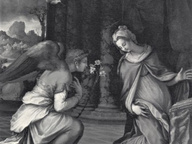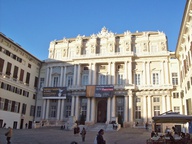The Bella of Tiziano at Grimani Palace
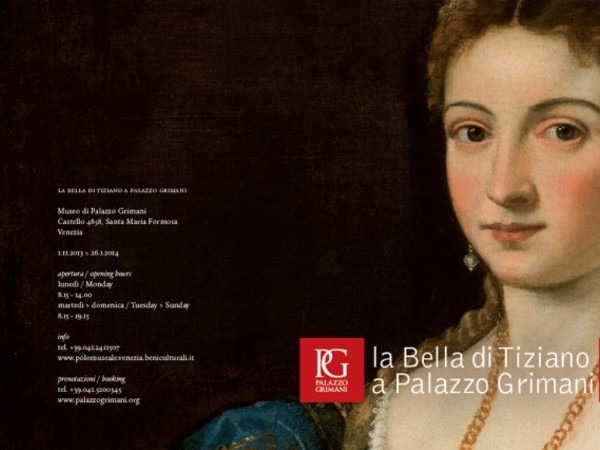
La Bella di Tiziano a Palazzo Grimani, Venezia
From 01 Novembre 2013 to 26 Gennaio 2014
Venice
Place: Grimani Palace
Address: Castello 4858
Times: monday 8.15am - 2pm; from tuesday to sunday 8.15am - 7.15pm
Responsibles: Fausta Navarro, Giulio Manieri Elia
Organizers:
- Soprintendenza Speciale per il Patrimonio storico
- artistico ed etnoantropologico e per il Polo Museale della città di Venezia e dei comuni della Gronda lagunare
Ticket price: € 4/ € 3
Telefono per informazioni: +39 041 2411507
E-Mail info: sspsae-ve.grimani@beniculturali.it
Official site: http://www.palazzogrimani.org
From 1 November to 26 January, the museum of Palazzo Grimani in Campo Santa Maria Formosa, The Beautiful houses one of the most famous paintings by Titian, absolutely outstanding masterpiece of Renaissance painting , the portrait of a young lavishly dressed and adorned with jewels . Recently restored dall'Opificio of precious stones and kept in the Galleria Palatina in Palazzo Pitti in Florence, La Bella is on display at Palazzo Grimani through the exchange of artwork between public museums . The Superintendence of Venice has indeed granted for a few months , Visions of the Afterlife Hieronymus Bosch, housed at the Palazzo Grimani , The Dream of the Renaissance exhibition that was held in the Pitti Palace, Florence so the Superintendent countered by offering the Bella.
The exhibition , curated by Giulio Manieri Elia and Fausta Navarro , is promoted by the Superintendence for the Historical, Artistic and Ethno-anthropological and for the Museum of the City of Venice and the municipalities in the Gutter lagoon and produced by Venice Academy .
The exhibition is accompanied by the work on display , from the presentation of the artworks of the restoration products and materials investigation during the restoration performed and edited by Opificio delle Pietre Dure in Florence , run by Patrizia Reiitano with the direction of Marco Ciatti after an extensive campaign of scientific investigations.
the story
Grand Duke of Urbino and Captain General of Venice, Francesco Maria I della Rovere acquistòLa Bella around 1536-38 after seeing her in the studio of Titian in the sittings for the realization of his own portrait and that of his wife Eleonora Gonzaga , in the spring of 1536. On May 2, 1536 , Francesco Maria speaks of the painting in a letter to his ambassador in Venice , the noble Pesaro Gian Giacomo Leonardi . , " You will say to Titiano .... to wait for things to quel'altre , et that the ' retrato of the woman who has the capacity Riviera, we want the end . " The portraits of the Dukes come to Pesaro in April of 1538 and it is likely that they were also La Bella, even then held in great consideration.
La Bella inventoried in 1624 resulted in the Palace of Casteldurante between the paintings and ducal , died Francesco Maria II Della Rovere , the last of the noble house , was moved to Florence in 1631 along with all the legacy of daughter Victoria. La Bella passed in 1694 as a legacy to Cardinal Francesco Maria , and after his death in 1711, the Grand Duke Cosimo III. Always recorded in the Pitti Palace in the eighteenth century , was inserted in the Palatine Gallery since the beginning of its formation, in the late eighteenth century.
The identification of the Beautiful
The search for identity Titian's La Bella has always constituted the main theme of art-historical studies on the painting . From the late nineteenth century considerations of critics are divided about the identity attributed to the woman pictured : noblewoman (identified in particular with Eleonora Gonzaga , Duchess of Urbino ) , or unknown courtesan ?
At the opening of the twentieth century , the publication by Alessandro Luzio letter of Francesco Maria della Rovere to Gian Giacomo Leonardi has marked a milestone in the story , a prerequisite for new documentary research and subsequent clarifications . With the publication of the document , the field of hypotheses for the supporters of the "party pro - identification" with Eleonora Gonzaga della Bella appeared , but only temporarily evacuated from the opportunity to spend the name of the duchess , as if the picture had shown the noblewoman , Francesco Maria Della Rovere would have written it .
Today we tend to believe , however , in the wake of the Anglo-Saxon studies , that the picture is not a true picture , but an image of idealized feminine beauty , according to a vogue already established in those years in the Venetian tradition of the representation of the " Beautiful Women , "to which Titian has succeeded in giving a new form of expression .
The restoration
The painting La Bella arrived in Florence in 1631 with the assets of the Della Rovere and remained almost continuously for four centuries in the apartments of the Pitti Palace and was the subject , rather than complex and invasive restorations , regular maintenance . The image was blurred and the whole flat with thick paint .
After an extensive campaign of scientific investigations and research historical artistic , the Precious stones performed a cleaning operation that has lightened the complex layering of paints and glazes are not original and eliminated a number of repainting .
Were performed after the revision of the frame , filling the small gaps and reintegration of the final coating. They are so precious and resurfaced details before illegible chromatic passages . Today, despite some deterioration due to the time and the restoration of the past, are returned to the visibility of the delicate transparent veil , the cold shadows of the complexion and the extraordinary rendition tissues.
The exhibition , curated by Giulio Manieri Elia and Fausta Navarro , is promoted by the Superintendence for the Historical, Artistic and Ethno-anthropological and for the Museum of the City of Venice and the municipalities in the Gutter lagoon and produced by Venice Academy .
The exhibition is accompanied by the work on display , from the presentation of the artworks of the restoration products and materials investigation during the restoration performed and edited by Opificio delle Pietre Dure in Florence , run by Patrizia Reiitano with the direction of Marco Ciatti after an extensive campaign of scientific investigations.
the story
Grand Duke of Urbino and Captain General of Venice, Francesco Maria I della Rovere acquistòLa Bella around 1536-38 after seeing her in the studio of Titian in the sittings for the realization of his own portrait and that of his wife Eleonora Gonzaga , in the spring of 1536. On May 2, 1536 , Francesco Maria speaks of the painting in a letter to his ambassador in Venice , the noble Pesaro Gian Giacomo Leonardi . , " You will say to Titiano .... to wait for things to quel'altre , et that the ' retrato of the woman who has the capacity Riviera, we want the end . " The portraits of the Dukes come to Pesaro in April of 1538 and it is likely that they were also La Bella, even then held in great consideration.
La Bella inventoried in 1624 resulted in the Palace of Casteldurante between the paintings and ducal , died Francesco Maria II Della Rovere , the last of the noble house , was moved to Florence in 1631 along with all the legacy of daughter Victoria. La Bella passed in 1694 as a legacy to Cardinal Francesco Maria , and after his death in 1711, the Grand Duke Cosimo III. Always recorded in the Pitti Palace in the eighteenth century , was inserted in the Palatine Gallery since the beginning of its formation, in the late eighteenth century.
The identification of the Beautiful
The search for identity Titian's La Bella has always constituted the main theme of art-historical studies on the painting . From the late nineteenth century considerations of critics are divided about the identity attributed to the woman pictured : noblewoman (identified in particular with Eleonora Gonzaga , Duchess of Urbino ) , or unknown courtesan ?
At the opening of the twentieth century , the publication by Alessandro Luzio letter of Francesco Maria della Rovere to Gian Giacomo Leonardi has marked a milestone in the story , a prerequisite for new documentary research and subsequent clarifications . With the publication of the document , the field of hypotheses for the supporters of the "party pro - identification" with Eleonora Gonzaga della Bella appeared , but only temporarily evacuated from the opportunity to spend the name of the duchess , as if the picture had shown the noblewoman , Francesco Maria Della Rovere would have written it .
Today we tend to believe , however , in the wake of the Anglo-Saxon studies , that the picture is not a true picture , but an image of idealized feminine beauty , according to a vogue already established in those years in the Venetian tradition of the representation of the " Beautiful Women , "to which Titian has succeeded in giving a new form of expression .
The restoration
The painting La Bella arrived in Florence in 1631 with the assets of the Della Rovere and remained almost continuously for four centuries in the apartments of the Pitti Palace and was the subject , rather than complex and invasive restorations , regular maintenance . The image was blurred and the whole flat with thick paint .
After an extensive campaign of scientific investigations and research historical artistic , the Precious stones performed a cleaning operation that has lightened the complex layering of paints and glazes are not original and eliminated a number of repainting .
Were performed after the revision of the frame , filling the small gaps and reintegration of the final coating. They are so precious and resurfaced details before illegible chromatic passages . Today, despite some deterioration due to the time and the restoration of the past, are returned to the visibility of the delicate transparent veil , the cold shadows of the complexion and the extraordinary rendition tissues.
SCARICA IL COMUNICATO IN PDF
COMMENTI

-
 Dal 27 marzo 2025 al 27 luglio 2025
Milano | Pirelli HangarBicocca
Dal 27 marzo 2025 al 27 luglio 2025
Milano | Pirelli HangarBicocca
-
 Dal 27 marzo 2025 al 30 giugno 2025
Bologna | Museo Civico Archeologico
Dal 27 marzo 2025 al 30 giugno 2025
Bologna | Museo Civico Archeologico
-
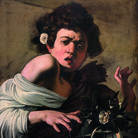 Dal 27 marzo 2025 al 20 luglio 2025
Firenze | Villa Bardini
Dal 27 marzo 2025 al 20 luglio 2025
Firenze | Villa Bardini
-
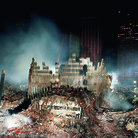 Dal 25 marzo 2025 al 24 agosto 2025
Brescia | Museo di Santa Giulia
Dal 25 marzo 2025 al 24 agosto 2025
Brescia | Museo di Santa Giulia
-
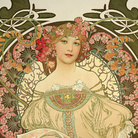 Dal 22 marzo 2025 al 20 luglio 2025
Ferrara | Palazzo dei Diamanti
Dal 22 marzo 2025 al 20 luglio 2025
Ferrara | Palazzo dei Diamanti
-
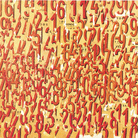 Dal 22 marzo 2025 al 08 giugno 2025
Venezia | Ca’ Pesaro – Galleria Internazionale d’Arte Moderna
Dal 22 marzo 2025 al 08 giugno 2025
Venezia | Ca’ Pesaro – Galleria Internazionale d’Arte Moderna

